Last week, a large force of B-2 Spirit bombers and other supporting assets deployed to Diego Garcia in the Indian Ocean, which TWZ was first to report on. The unprecedented stealth bomber deployment comes amid growing U.S. threats to the regime in Tehran, as well as stepped-up strikes on their Houthi proxies in Yemen. Now, according to a recent report from The Telegraph, Iranian officials are exploring options for preemptive strikes on Diego Garcia or at least a show of force aimed near the island. The mounting tensions and high-profile B-2 deployment offer a new and particularly pronounced data point in the already heated debate over whether the U.S. military should be investing more in new hardened aircraft shelters and other fortified air base infrastructure amid rapidly evolving standoff aerial attack threats.
A satellite image from Planet Labs taken today that TWZ has reviewed shows six B-2s, as well as six other large aircraft that could include tankers, cargo planes, and other types, parked in the open at the airfield on Diego Garcia. Another Planet Labs image from March 29 shows four B-2s and six KC-135 tankers parked on the apron, as well as three of the base’s four specially designed B-2 shelters open. Containers that may be associated with deployable mobile operations centers are also visible. Whether or not there are additional bombers inside the shelters in either image is unknown. The shelters are not hardened, but are climate-controlled, and are each designed to hold a single B-2 each.
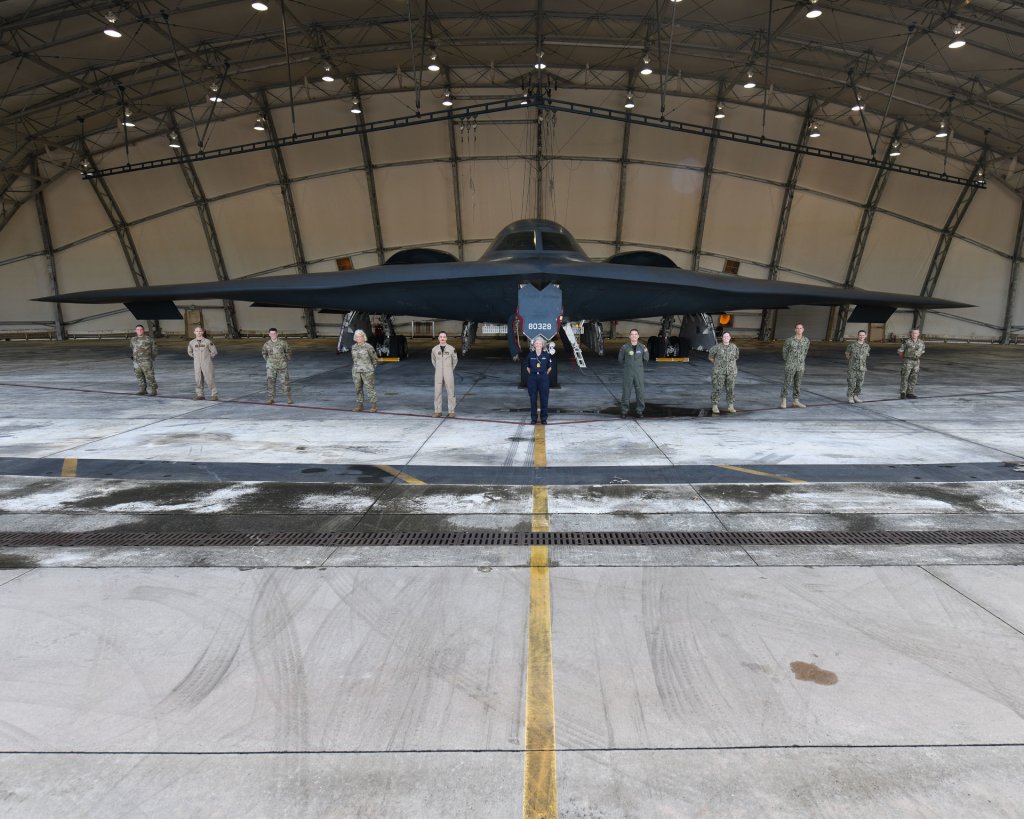 A picture from 2020 showing a B-2 inside one of the shelters at Diego Garcia. USAF Tech. Sgt. Heather Salazar
A picture from 2020 showing a B-2 inside one of the shelters at Diego Garcia. USAF Tech. Sgt. Heather SalazarThe B-2 Spirit looks full on Flight Of The Navigator when stowed in its B-2 Shelter System (B2SS) while operating abroad. pic.twitter.com/mFbnpD8p4x
— Tyler Rogoway (@Aviation_Intel) June 23, 2018Additional satellite imagery has previously been circulating online showing up to five B-2s on the apron along with other supporting aircraft. There are still-unconfirmed reports that seven Spirits may now be at Diego Garcia. The Air Force only has 20 of the stealth bombers in total, meaning that somewhere between 20 and 35 percent of the entire fleet is now forward-deployed in the Indian Ocean. Only a portion of the B-2 fleet is available for operational tasking at any one time due to maintenance and other factors, so this represents an even higher percentage of the bombers that the Air Force has to actually send out on missions.
🇬🇧🇺🇸NSF Diego Garcia🇺🇸🇬🇧
Latest view of the situation at Diego Garcia (31 March 2025) via Sentinel 2
Appears to be 5x B-2 Spirit Stealth Bombers on the south apron as well as 6x other aircraft (likely KC-135 but could also be C-17A or P-8A)@Schizointel pic.twitter.com/AXaPndoVp2
At least as of yesterday, an additional B-2 was still at Hickam Air Force Base in Hawaii after diverting there on March 24 for reasons that remain unexplained.
As TWZ has previously noted, the B-2 force Diego Garcia is a major show of force aimed squarely at the Middle East, primarily toward Iran, but also Iranian-backed Houthi militants in Yemen. There has been a recent surge of U.S. airpower and other forces into the Middle East, including the dispatching of a second U.S. Navy carrier strike group to join the one already in the region.
Significant movement from Osan AB, South Korea to Isa AB, Bahrain is underway.
At least 13 US Air Force C-17A Globemaster III's have arrived at Osan in the last 3 days. Four have left Osan and arrived at Isa AB. Mission coding is sequential suggesting that these flights are… pic.twitter.com/MEA2HCIQ3l
Six USAF B-2 Spirit stealth bombers — 1/3 of America’s fleet — forward deployed to Diego Garcia over the last week 🇺🇸
The Harry S. Truman Carrier Strike Group (CSG) continues strike operations against the Houthi. Carl Vinson CSG, en route to the Middle East, is 1-2 weeks out. pic.twitter.com/xkRvcOMcAa
The USS Carl Vinson Carrier Strike Group is just days away from entering the CENTCOM/5th Fleet Area of Responsibility. https://t.co/OwLduZuvFH
— TheIntelFrog (@TheIntelFrog) April 1, 2025But the B-2’s are an especially large threat to Iran, and specifically their prized nuclear program, which is the primary catalyst for the current tensions. They offer a unique mix of capabilities when it comes to penetrating deep inside hostile territory to conduct precision strikes against deeply buried and otherwise hardened facilities. The B-2 is currently the only U.S. aircraft certified to operationally employ the 30,000-pound GBU-57/B Massive Ordnance Penetrator (MOP) bunker buster bombs. The MOP itself provides a unique conventional weapon for prosecuting especially deep targets, such as ones associated with Iran’s nuclear and long-range missile programs. TWZ has previously highlighted the signals that B-2s, in particular, send to the regime in Tehran, including after the stealth bombers were used in strikes against the Houthis in Yemen last year.
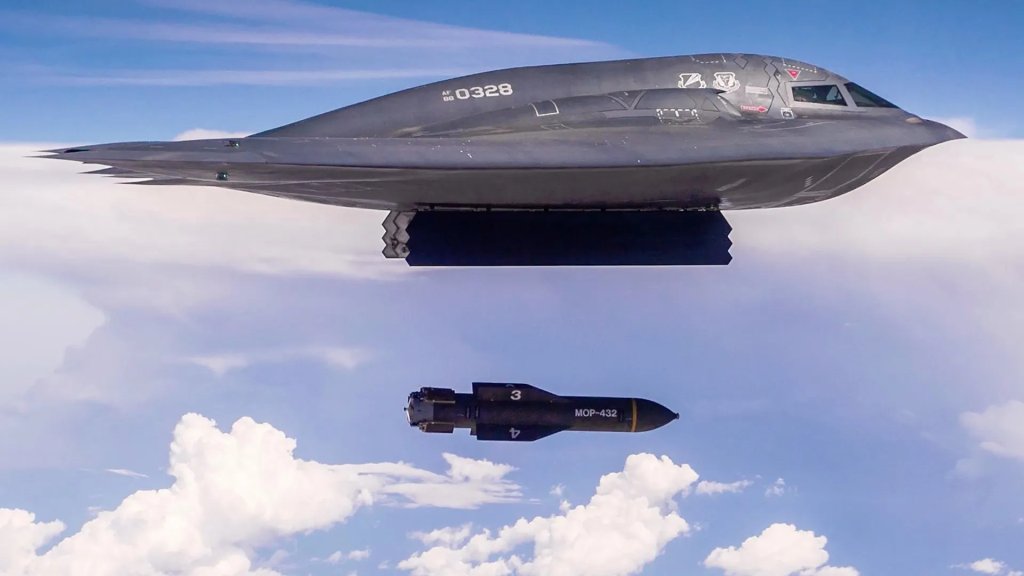 B-2 drops a GBU-57/B MOP during a test. USAF
B-2 drops a GBU-57/B MOP during a test. USAF Now, “top [Iranian] commanders are being urged to launch preemptive strikes on the island and its base if [U.S. President Donald] Trump’s threats have become more serious,” an unnamed official in Tehran said, according to The Telegraph’s report yesterday. “Discussions about the island have intensified since the Americans deployed bombers there.”
“Some are suggesting that missiles be fired towards the island, not with the intent to hit anything, but to fall into the water to send a clear message to the Americans that we are serious,” the same individual reportedly added.
Yesterday, Iran’s Supreme Leader Ali Khamenei also threatened a strong response to any new attacks by the United States or Israel.
“If they [Iran] don’t make a deal there will be bombing,” President Trump had said in an interview with NBC News‘ Kristen Welker on Sunday. “It will be bombing the likes of which they have never seen before.”
Trump in a strong warning to Iran: "If they don't make a deal, there will be bombing — and it will be bombing the likes of which they have never seen before." pic.twitter.com/1qi5TfmUQ1
— Open Source Intel (@Osint613) March 30, 2025The Trump administration has been using back channels to try to negotiate a new nuclear deal of some kind with Iran while also pursuing a so-called “maximum pressure” campaign against the regime in Tehran, of which the B-2 deployment is a major part. All of this is primarily focused on pushing the Iranians to abandon any potential of producing a nuclear weapon. U.S. authorities consistently assess that the Iranian government does not have an active nuclear weapons program, but that it could take just weeks or even days for them to produce the requisite fissile material should it decide it change course. A recent letter from President Trump to Iran’s Supreme Leader Khamenei reportedly included a two-month deadline for reaching an agreement, which could come up as soon as the first week of May.
“We are not moving towards [nuclear] weapons, but if you do something wrong in the Iranian nuclear issue, you will force Iran to move towards that because it has to defend itself,” Ali Larijani, an adviser to Khamenei who has served as a top negotiator in the past, said today on state television in Iran. “Iran does not want to do this, but … [it] will have no choice.”
Based on the publicly assessed capabilities of Iran’s missile and drone arsenals, the Indian Ocean island remains largely out of the reach of threats launched directly from Iranian territory. TWZ has highlighted the defensive value the remote outpost’s physical location offers in the context of previous large-scale bomber deployments intended to send signals to the government in Tehran.
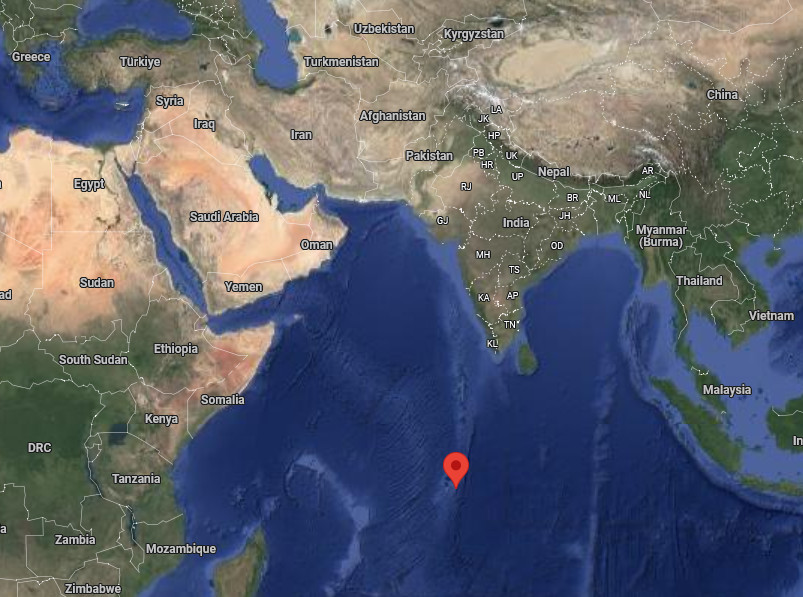 A map showing the general location of Diego Garcia. At shortest, the distance between Iran and the Indian Ocean island is some 2,358 miles (3,795 kilometers). Google Maps
A map showing the general location of Diego Garcia. At shortest, the distance between Iran and the Indian Ocean island is some 2,358 miles (3,795 kilometers). Google Maps At the same time, ever-growing threats emanate from Iran, as well as its regional proxies, that are no longer just defined by range rings around the Middle East. Iran has notably commissioned multiple sea base-like vessels that can be used to launch potentially large numbers of ballistic and cruise missiles, as well as long-range kamikaze drones, all from hundreds of miles away, in recent years. The Iranians have also demonstrated missile and drone capabilities, including launchers in standard shipping containers, which could be employed from commercial cargo and other civilian ships. Iran already has a history of using converted cargo vessels as motherships for intelligence gathering and covert attacks. There is also the potential for Iranian operatives or proxies to infiltrate an area to launch more localized, including using smaller and shorter-ranged weaponized drones.
Iran’s sea base-like ship Shahid Mahdavi, a converted container ship from which missiles and drones can be launched, notably made a port visit to Port Klang in Malaysia in February after sailing through the Indian Ocean. The Moudge class corvette Dena accompanied the Shahid Mahdavi on its voyage, which began last year. Ship tracking data suggests the two ships came within 800 miles of Diego Garcia during the trip.
How successfully any attempted Iranian attacks on Diego Garcia might be is an open question. It is also unclear what the current defense posture on the island is, as well as how it may have been bolstered as part of the deployment of the B-2s.
“We have multi-layered defense systems to ensure the security and protection of our personnel and equipment,” a spokesperson for U.S. Indo-Pacific Command (INDOPACOM) told TWZ.
Beyond any ground-based defenses on Diego Garcia, this is also a textbook case for how U.S. Navy ships can be tasked to provide additional bubbles of air and missile defense around a particular littoral area. Surface warships and submarines, as well as maritime patrol aircraft flying from the island, could help provide an additional screen against maritime threats, including vessels capable of launching missiles and drones.
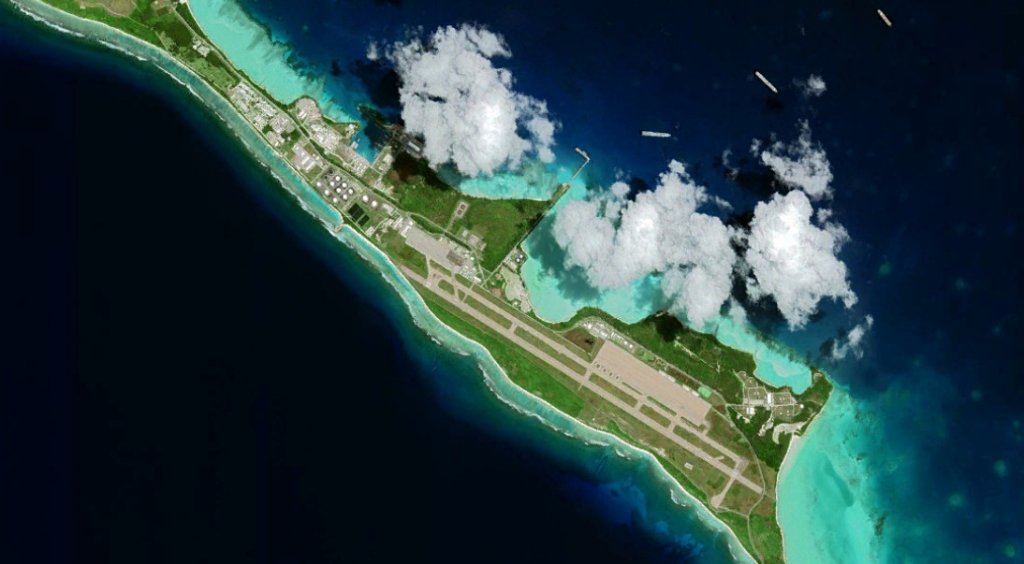 A satellite image offering a general view of the airfield on Diego Garcia. Google Earth
A satellite image offering a general view of the airfield on Diego Garcia. Google Earth Iranian ships could seek to overwhelm any defenses on Diego Garcia by launching large-volume drone and missile attacks. Iran used similar tactics against Israel on two separate occasions last year, which required significant Israeli, U.S., and other foreign forces to help blunt those incoming threats. The Houthis in Yemen have also been launching complex drone and missile attacks on foreign warships, including U.S. carrier strike groups, and commercial vessels in and around the Red Sea.
Any Iranian ships used to conduct attacks on Diego Garcia would quickly become targets for U.S. forces. An overt Iranian attack on the island launched from anywhere would otherwise put the two countries in a state of open conflict. Since it is a British territory, the United Kingdom could be embroiled, as well.
Iran attempting to preemptively attack the island still seems like a long shot, although some form of show of force is more possible, although probably quite unlikely considering the tensions in play at the moment. If the B-2s are used to strike Iran directly, this calculus would clearly change, but the U.S. would be prepared for such contingencies. The use of fighters has played a major role in protecting assets against Iranian and Houthi long-range drone attacks. We could see a fighter contingent deployed to the island prior to May, along with additional defenses. This would also be a possible sign that the administration intends to use the stealth bombers if a deal doesn’t move forward.
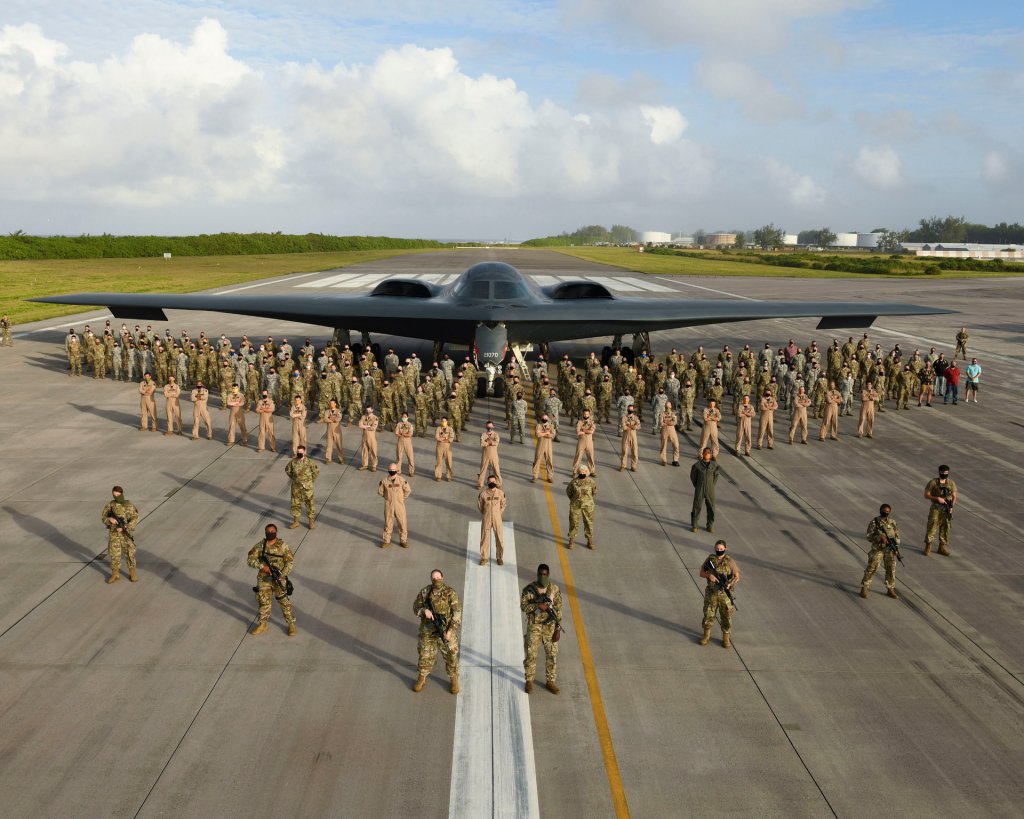 US Air Force members, government employees, and contractors pose in front of a B-2 at Diego Garcia in 2010. USAF Tech. Sgt. Heather Salazar
US Air Force members, government employees, and contractors pose in front of a B-2 at Diego Garcia in 2010. USAF Tech. Sgt. Heather SalazarWhatever happens, it is indisputable that aircraft sitting exposed on a flightline are particularly vulnerable to attack — even to drone threats leveraging commercially available technology. This is something we regularly highlight and that has been continually demonstrated in the ongoing war in Ukraine. The B-2s are incredibly fragile national treasures and cannot be replaced. Losing even one to even a low end drone attack would be a massive hit America’s standing strategic capabilities.
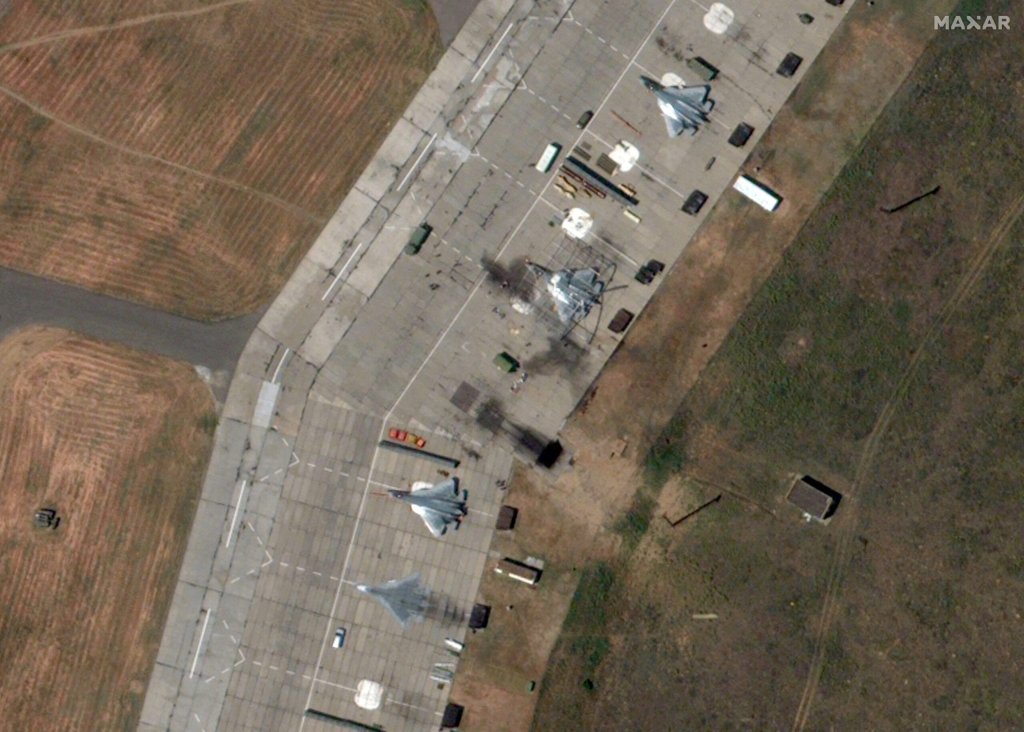 A Maxar satellite image taken on June 8, 2024, showing the aftermath of a Ukraiian drone attack that damaged one and possibly two Russian Su-57 Felon new generation fighters at Akhtubinsk Air Base. Satellite image ©2024 Maxar Technologies
A Maxar satellite image taken on June 8, 2024, showing the aftermath of a Ukraiian drone attack that damaged one and possibly two Russian Su-57 Felon new generation fighters at Akhtubinsk Air Base. Satellite image ©2024 Maxar Technologies When it comes to the threat posed by standoff weapons to aircraft on the ground, remember that Iran’s missile and drone arsenals are more limited in scale, scope and capabilities when compared to those of a near-peer competitor to the United States, especially China. The Chinese armed forces have far more options to hold not only Diego Garcia, but other U.S. bases, particularly those elsewhere in the Indo-Pacific region, at risk. This also further reinforces the threat of high-volume strikes overwhelming existing active air and missile defenses.
As such, the aircraft shelters, or the lack thereof, on Diego Garcia underscores the larger debate ongoing now about whether or not the U.S. military should be building more hardened aircraft shelters and otherwise improving the physical resiliency of its bases at home and abroad. A report the Hudson Institute think tank in Washington, D.C., published in January included an assessment that it might take only 10 missiles with warheads able to scatter cluster munitions across areas 450 feet in diameter to neutralize all aircraft parked in the open, as well critical fuel storage facilities, at various key air bases. Just five of these weapons would be able to destroy or badly damage every aircraft sitting on the main combat aviation ramp at Diego Garcia. Once again, Iran has the ability to launch its increasingly capable ballistic missiles at sea and within range of the island. For China, it has many options to execute such an attack.
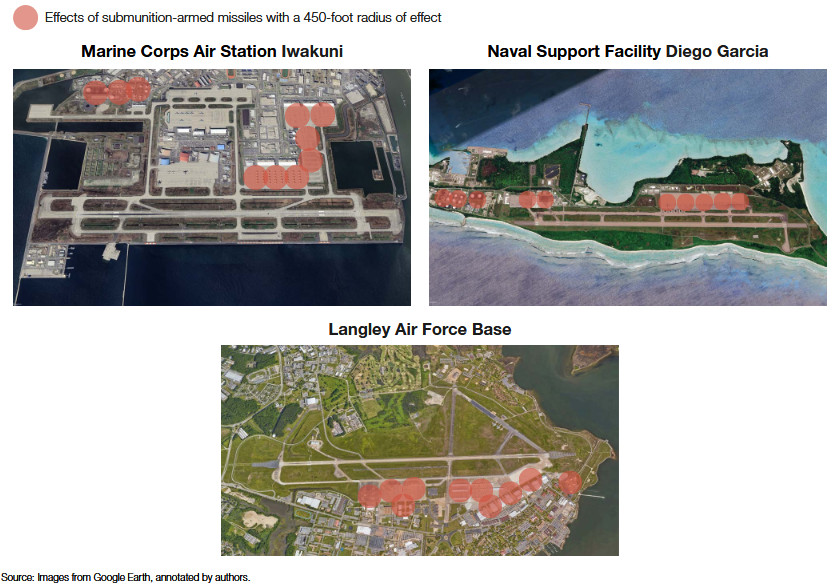 A graphic accompanying the Hudson Institute’s January 2025 report showing how aircraft parking areas and fuel storage facilities areas at key air bases could be readily saturated by missiles with warheads packed with cluster munitions. Hudson Institute
A graphic accompanying the Hudson Institute’s January 2025 report showing how aircraft parking areas and fuel storage facilities areas at key air bases could be readily saturated by missiles with warheads packed with cluster munitions. Hudson Institute Depending on their exact construction, semi-hardened shelters could still provide some degree of protection against shrapnel from things like cluster munitions or kamikaze drones. In general, soft shelters help shield aircraft from the elements, which, as already noted, is of particular importance for stealthy types. It also makes it harder for an opponent to track aircraft movements, making it more challenging to target critical aviation assets. Just having the four shelters on Diego Garcia has made it difficult for independent observers to readily confirm how many B-2s are actually there right now. Creating ambiguity around the locations of assets is becoming much harder as satellite imagery becomes increasingly ubiquitous, even to independent observers via commercial providers, as this story makes clear.
Ukrainian drone and missile attacks on Russian air bases have already prompted the latter country to embark on a major effort to construct new hardened air shelters, particularly at air bases within range of those threats. The Chinese military has also been building thousands of hardened and unhardened aircraft shelters across its air bases. This is a growing trend that also includes subterranean hardened facilities, such as ones built into mountains. This is something that has been observed elsewhere globally, too, including in North Korea and Iran.
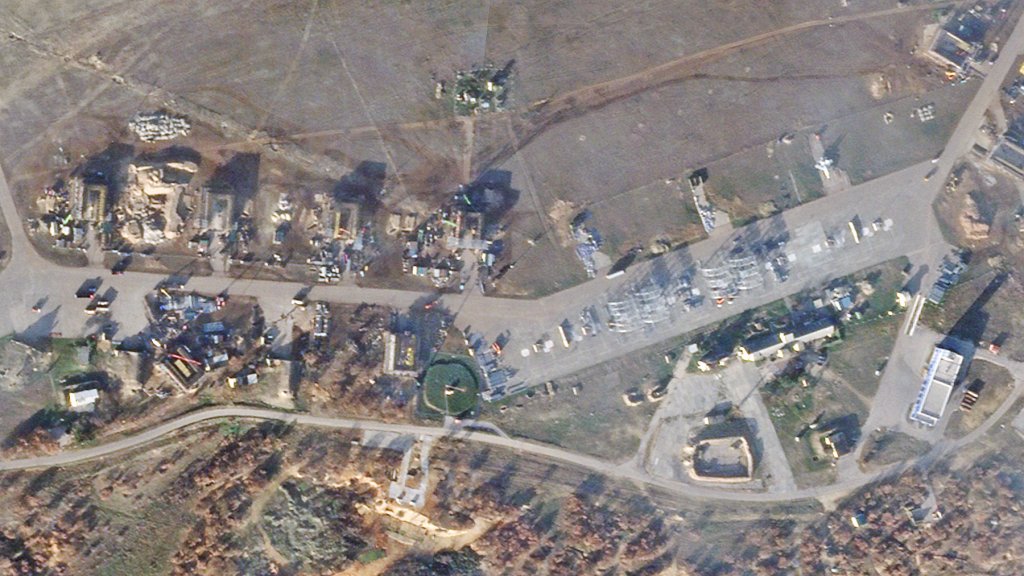 Work underway in December 2024 on new hardened aircraft shelters and other infrastructure at Russia’s Belbek Air Base on the occupied Crimean Peninsula. PHOTO © 2024 PLANET LABS INC. ALL RIGHTS RESERVED. REPRINTED BY PERMISSION
Work underway in December 2024 on new hardened aircraft shelters and other infrastructure at Russia’s Belbek Air Base on the occupied Crimean Peninsula. PHOTO © 2024 PLANET LABS INC. ALL RIGHTS RESERVED. REPRINTED BY PERMISSION The Air Force continues to push back on calls to invest in more hardened infrastructure. So far, the service has preferred to keep the focus on distributed and disaggregated concepts of operations, known collectively as Agile Combat Employment (ACE), as the primary means of reducing vulnerability to attack. ACE is heavily based around short-notice and otherwise irregular deployments, often to remote, austere, or otherwise non-traditional locales like Diego Garcia. The Air Force also regularly talks about the importance of active base defenses, such as surface-to-air interceptors, with work now underway on Guam being a prime example. Other branches of the U.S. military, particularly the U.S. Marine Corps, have been focused on similar efforts rather than physical hardening.
“While ‘active defenses’ such as air and missile defense systems are an important part of base and force protection, their high cost and limited numbers mean the U.S. will not be able to deploy enough of them to fully protect our bases,” a group of 13 Republican members of Congress wrote in an open letter to the Air Force back in May 2024. “In order to complement active defenses and strengthen our bases, we must invest in ‘passive defenses,’ like hardened aircraft shelters … Robust passive defenses can help minimize the damage of missile attacks by increasing our forces’ ability to withstand strikes, recover quickly, and effectively continue operations.”
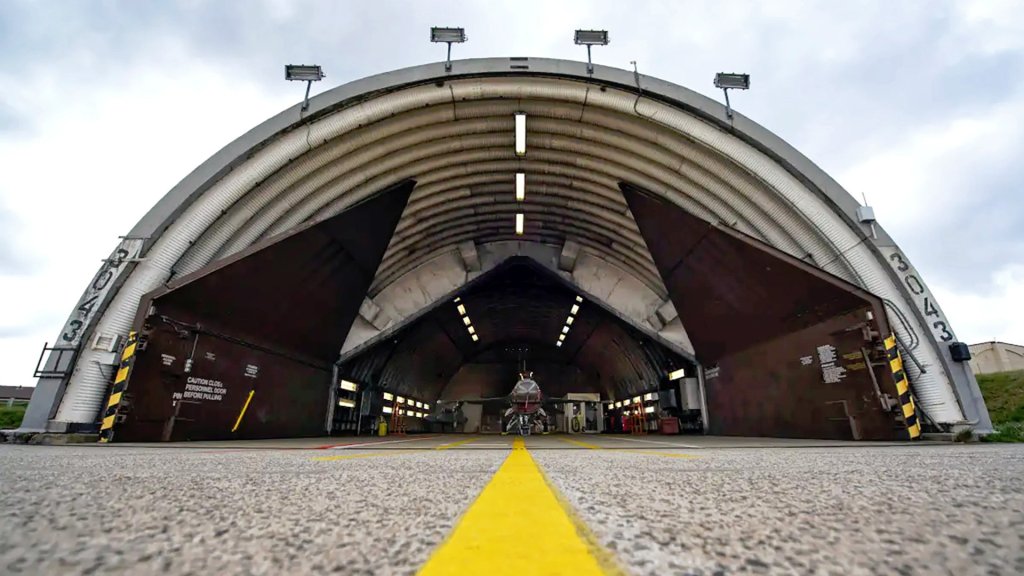 An F-16 fighter sits inside a hardened aircraft shelter. USAF
An F-16 fighter sits inside a hardened aircraft shelter. USAF There are capacity concerns on that front, as well, with U.S. Army air and missile defense forces struggling to meet current operational demands. Per current intra-service agreements, the Army is the lead surface for defending Air Force bases against aerial threats.
“Our forward air bases are fixed. We’re using Agile Combat Employment to increase the numbers of [bases] which we have the potential to operate from. But the Chinese have fielded literally thousands of weapons to attack those bases – cruise missiles, ballistic missiles and hypersonics,” former Secretary of the Air Force Frank Kendall said on a recent edition of Defense & Aerospace Report‘s Air Power Podcast. “So having an effective, cost-effective ability to defend them is very important. Patriot and THAAD [Terminal High Altitude Area Defense] type of [surface-to-air] systems are not going to get you there.”
“The economics just don’t work. So we need something more cost-effective than those,” Kendall continued. “If we leave our bases vulnerable to attack, the F-22s, the F-35s, and the F-47s will never get off the ground.”
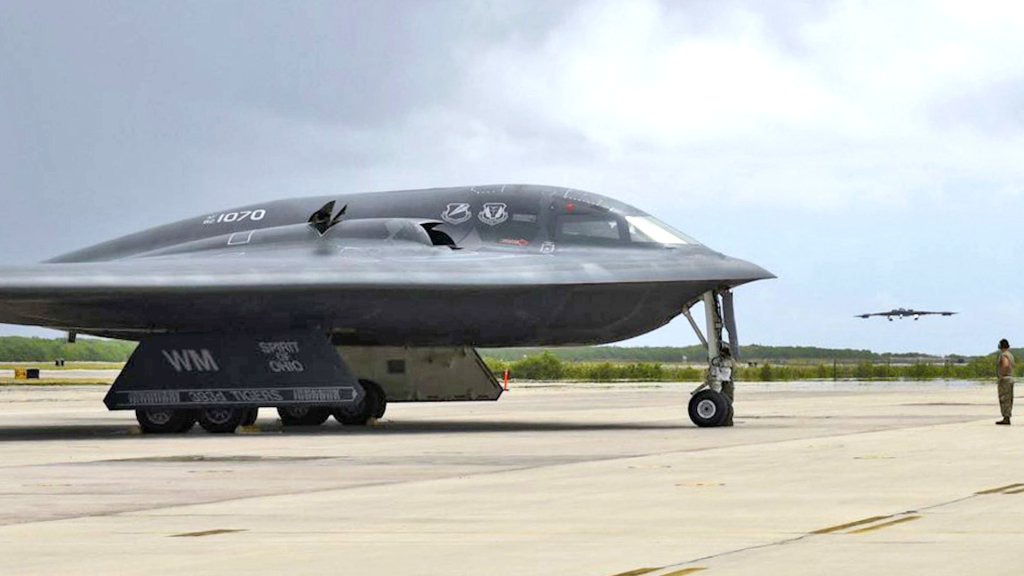 B-2s at Diego Garcia during a past deployment. USAF
B-2s at Diego Garcia during a past deployment. USAF The threat ecosystem is only set to continue expanding. The democratization of long-range guided weaponry is already occurring at a rapid pace, and smaller nation states and even non-state actors are increasingly able to employ such systems.
As it stands now, a substantial portion of the B-2 fleet is in Diego Garcia, and a significant number of them have to be parked completely out in the open due to the lack of shelters there now. Whatever the veracity of Iran’s threats to target the island might be, this can only add to the already raging debate about the U.S. military’s needs when it comes to new hardened infrastructure in general.
Howard Altman contributed to this story.
Contact the author: [email protected]

 By The War Zone | Created at 2025-04-01 17:21:11 | Updated at 2025-04-02 21:13:01
1 day ago
By The War Zone | Created at 2025-04-01 17:21:11 | Updated at 2025-04-02 21:13:01
1 day ago








